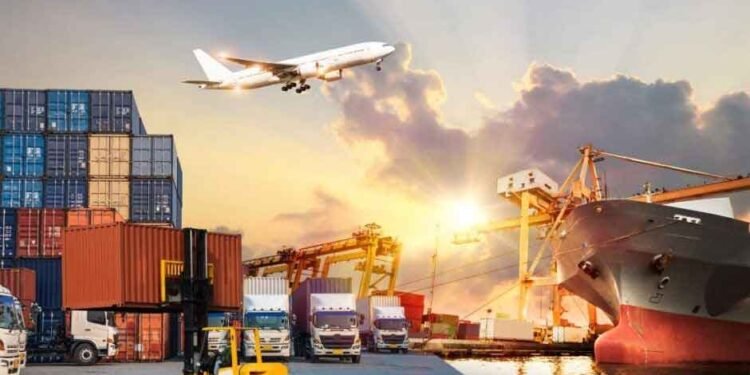In today’s fast-paced global marketplace, businesses face increasing challenges in managing their supply chains efficiently while staying compliant with ever-evolving regulations. Seamless logistics and compliance are no longer optional—they are essential for maintaining competitive advantage, reducing costs, and ensuring customer satisfaction.
This blog examines the key benefits of integrating logistics and compliance processes, and how companies can maximize their potential to drive business success.
The Importance of Seamless Logistics
Logistics is the backbone of any supply chain, involving the planning, implementation, and control of goods movement from origin to destination. When logistics operations are seamless, businesses enjoy:
- Faster delivery times:Streamlined logistics reduce transit delays, helping to meet customer expectations.
- Cost savings:Efficient route planning, inventory management, and transportation reduce operational expenses.
- Improved inventory control:Real-time tracking and better forecasting minimize stockouts and excess inventory.
- Enhanced customer satisfaction:Reliable delivery and transparent communication build trust and loyalty.
A seamless logistics system relies heavily on technology, including warehouse management systems (WMS), transportation management systems (TMS), and real-time data analytics. By leveraging these tools, companies can automate workflows, optimize routes, and respond quickly to supply chain disruptions.
Why Compliance Matters in Logistics
While efficient logistics ensure goods reach their destination on time, compliance ensures they do so in a legal and ethical manner. Non-compliance with customs regulations, trade laws, and safety standards can lead to hefty fines, shipment delays, and reputational damage. Key compliance considerations include:
- Customs documentation:Accurate paperwork is essential to avoid customs clearance delays.
- Trade regulations:Adherence to import/export controls, sanctions, and embargoes is critical.
- Safety standards:Compliance with health and safety regulations protects employees and consumers.
- Environmental regulations:Sustainable logistics practices are increasingly mandated worldwide.
Compliance challenges are amplified when handling international shipments, as differing regulations across borders can complicate logistics. Businesses must stay updated on legal changes and maintain rigorous internal controls to mitigate risks.
The Synergy of Logistics and Compliance
Integrating logistics and compliance processes creates a powerful synergy that enhances overall supply chain performance. Companies that break down silos between these functions can:
- Reduce delays:Proactive compliance checks prevent last-minute holds and fines.
- Lower costs:Avoiding penalties and expedited shipping fees saves money.
- Boost transparency:End-to-end visibility into logistics and compliance status improves decision-making.
- Enhance agility:Coordinated operations can adapt faster to regulatory changes or market shifts.
For example, incorporating customs compliance into logistics planning ensures that shipments are prepared with the correct documentation and tariffs calculated in advance. This integration streamlines customs clearance, reducing time spent at borders.
Leveraging Expert Services for Seamless Integration
Achieving seamless logistics and compliance can be complex, especially for small to medium enterprises without dedicated in-house expertise. Outsourcing to specialist providers can unlock significant benefits, including access to the latest technology, regulatory knowledge, and established networks.
One such valuable resource is a trusted customs clearance service. By partnering with experts who understand international customs requirements, businesses can:
- Expedite customs processes through accurate and timely documentation.
- Navigate complex tariff codes and duty payments.
- Avoid costly delays and compliance penalties.
- Focus on core business activities while specialists manage the intricacies of logistics.
Investing in professional support ensures that logistics and compliance are managed seamlessly, enabling companies to scale operations globally with confidence.
Future Trends in Logistics and Compliance
Technological advancements and regulatory developments are shaping the future of logistics and compliance. Key trends to watch include:
- Digitalization:Blockchain, AI, and IoT are revolutionizing supply chain transparency and compliance monitoring.
- Sustainability:Eco-friendly logistics practices are becoming a regulatory and consumer demand.
- Data-driven decision-making:Advanced analytics enable predictive compliance and proactive risk management.
- Cross-border collaboration:Harmonization of international trade regulations will simplify compliance.
Businesses that stay ahead of these trends and invest in integrated logistics and compliance solutions will gain a strategic advantage in an increasingly complex global market.
Conclusion
Unlocking the benefits of seamless logistics and compliance is critical for businesses aiming to thrive in today’s interconnected world. By integrating these functions, companies can achieve faster delivery, cost savings, regulatory adherence, and enhanced customer satisfaction. Leveraging expert services such as a reliable customs clearance service can further streamline operations and reduce risk. Embracing technology and forward-thinking strategies will position businesses for success in the evolving landscape of global trade.
If you’re looking to enhance your supply chain efficiency while ensuring full compliance, consider partnering with specialized providers who can help you navigate the complexities with ease.












